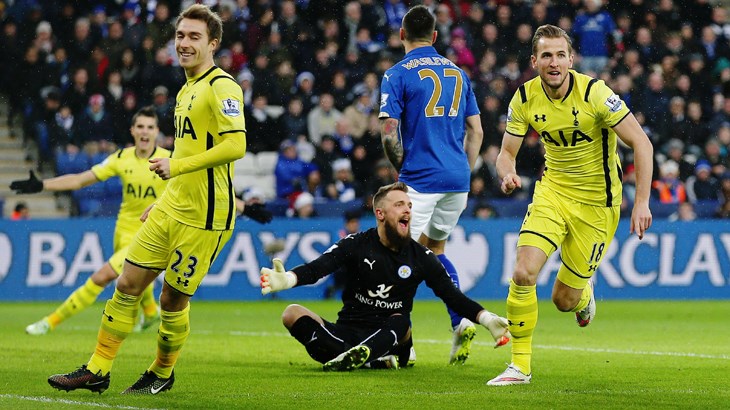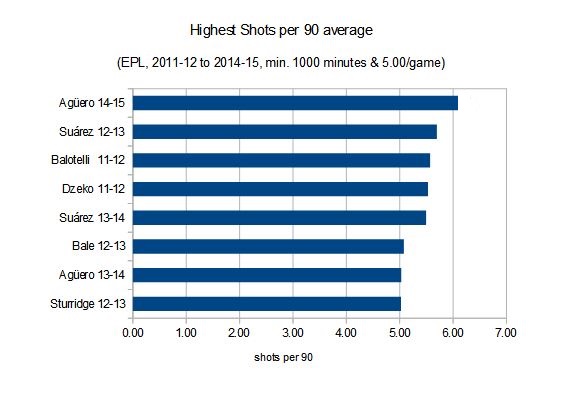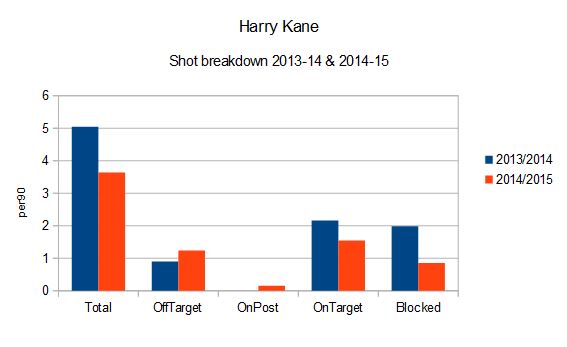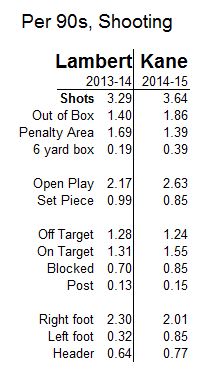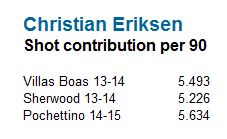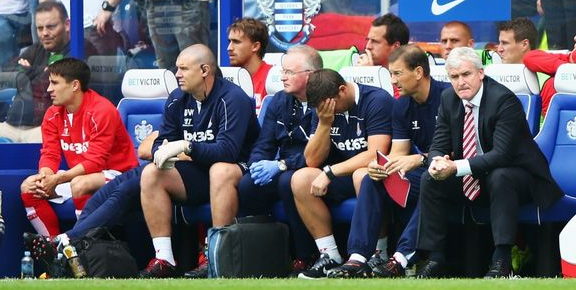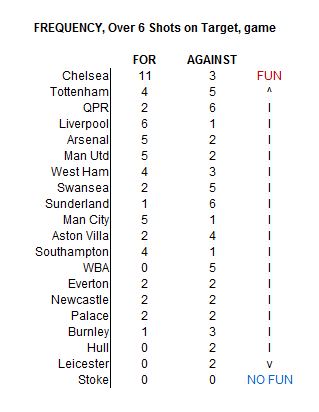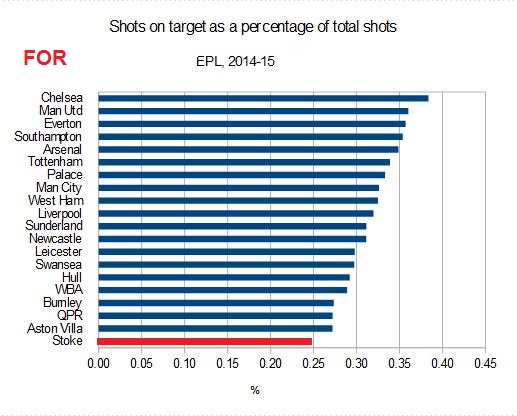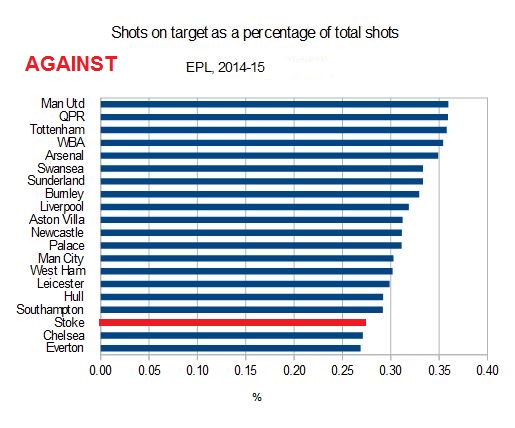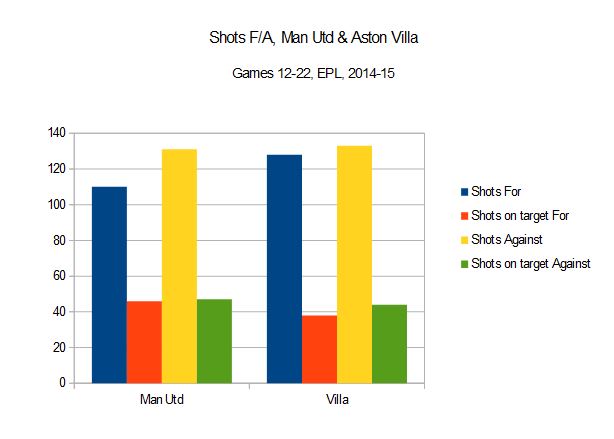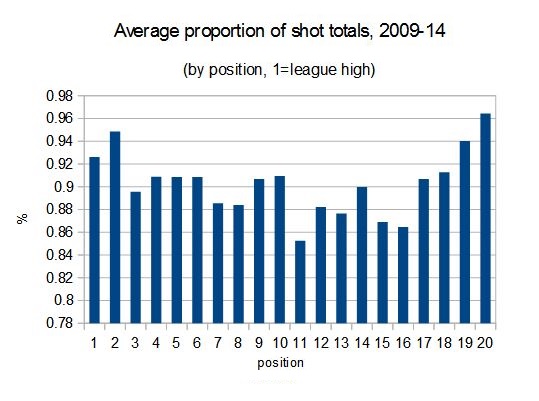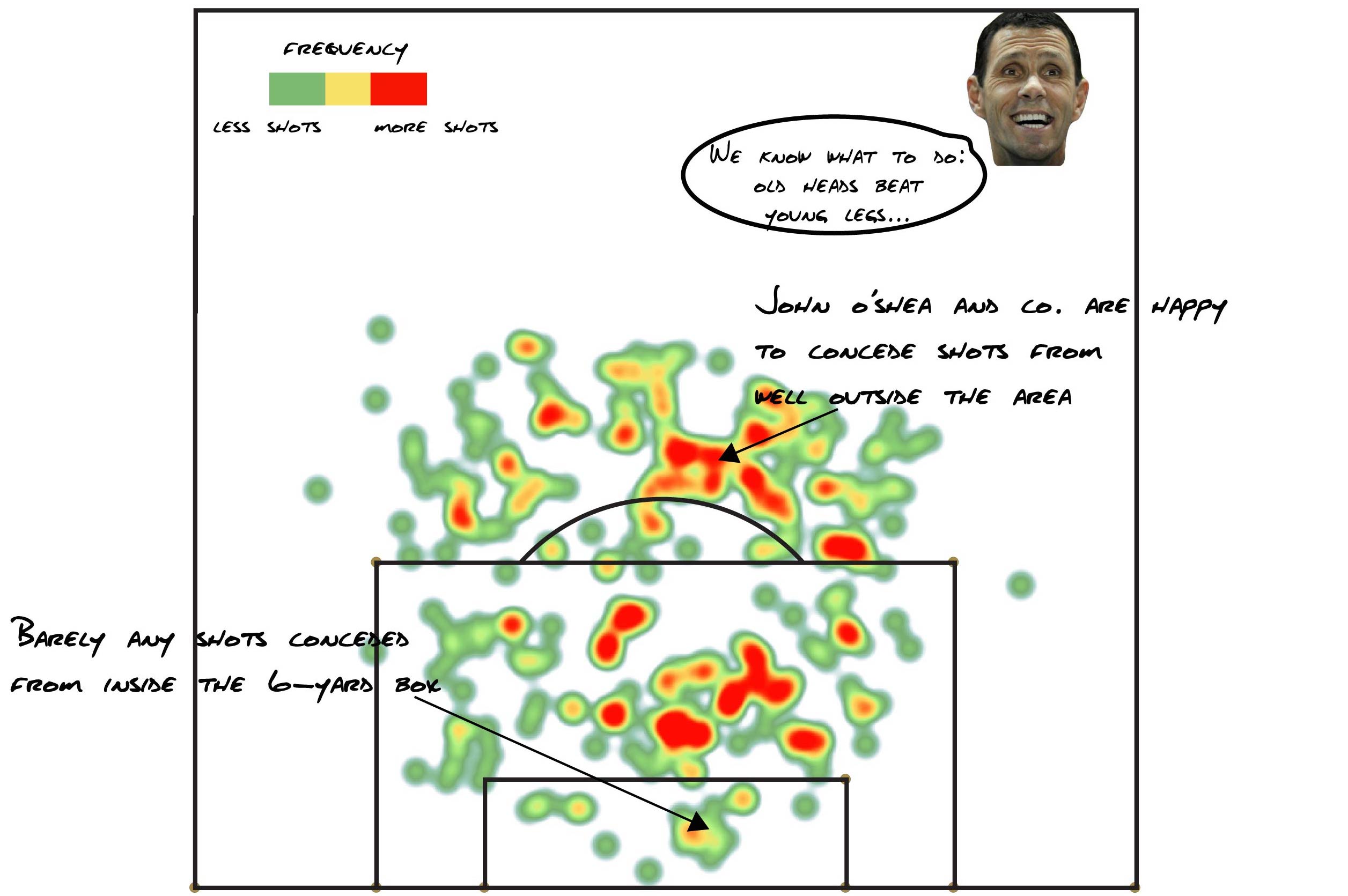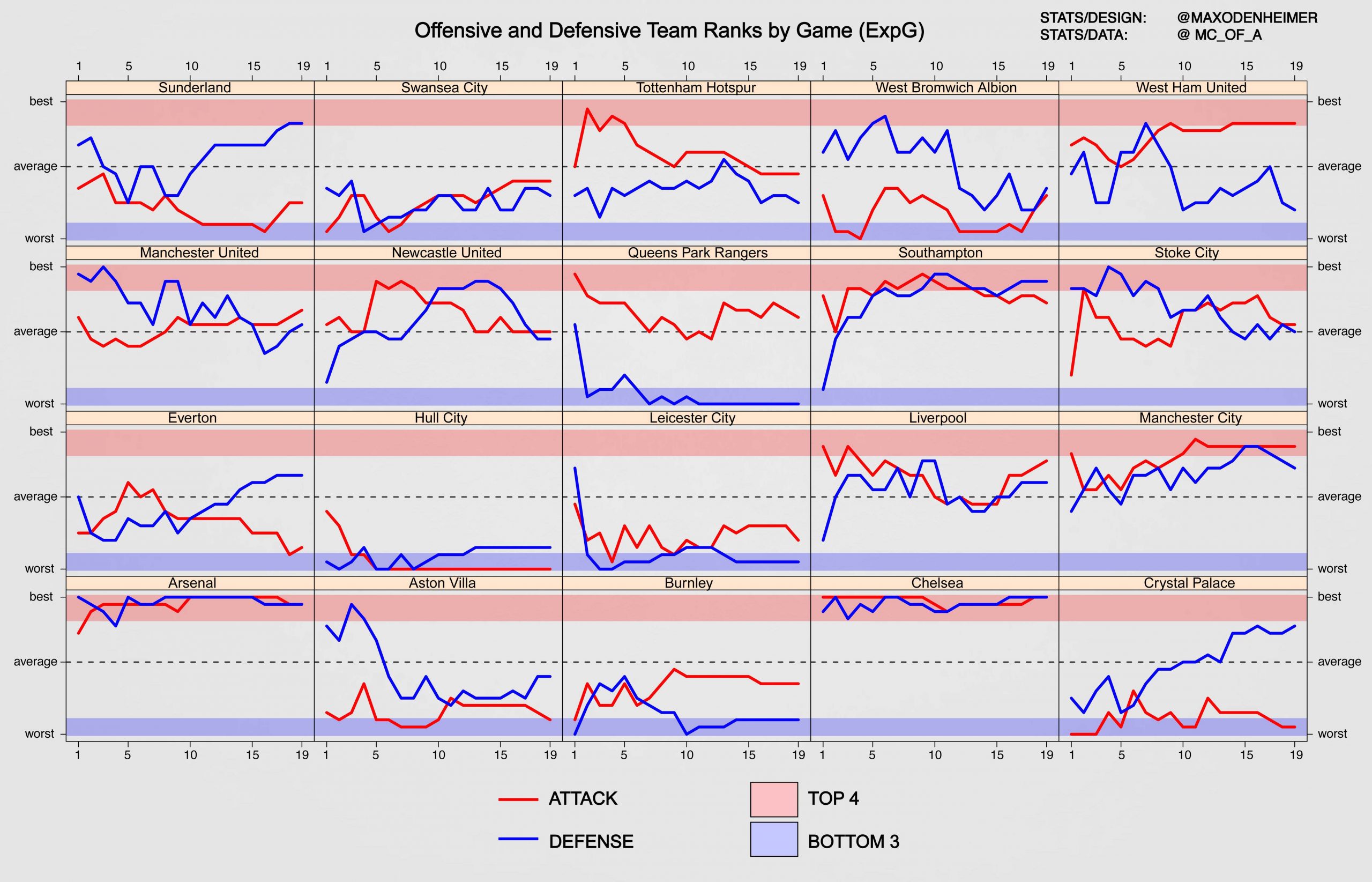Mauricio Pochettino has had a tricky start to his Tottenham tenure but in his attack, two players have come to the fore: Christian Eriksen and Harry Kane. Both are now seen as pivotal to Tottenham's attacking schemes but their routes to becoming regular starters at Tottenham have been very different and each has overcome apparent indifference from certain coaches to secure their spots in the team. But how effective are they? Does their hype match their achievement? Let's find out.
Neither player featured heavily under Villas Boas, a coach who favoured physicality and experience over guile and youth but it was Eriksen's performance in a 0-1 defeat against Newcastle last season that stood out on the numbers and made him a player to watch; a performance so noteworthy that it was dissected by Ted here on Statsbomb. Both Kane and Eriksen featured far more often under Tim Sherwood, Eriksen to such an extent that he won the club's Player of the Season award despite hardly featuring during the early months. Kane featured later on. Beyond the point Sherwood had been told he would be leaving he seemingly ignored status and picked teams featuring players he liked. 500 minutes of Premier League game-time was valuable experience for Kane and he showed good form, notable for two encouraging aspects: shot volume and goals.
Another head coach offered new challenges and Pochettino seemingly took to Eriksen quicker than he did Kane; he's the only outfielder to start every league match this season. Kane's route to the first team this season has been more unorthodox. Initially deployed in Europe & seemingly behind Adebayor and maybe Soldado in the league squad, two obvious factors have fast-tracked his step up: the annual disappearance of Adebayor and yet again, goals. We reach 2015 with Kane & Eriksen firmly established as Tottenham's most effective attackers (a quick check over at the contributions at 'Football in the Clouds' confirms this) but how are their games represented within the statistics? Let's see.
Kane comes out shooting
Those 500 minutes at the back-end of 2013-14 were the first chance Kane had to play Premier League football on a regular basis and within them he showed great promise. An ability to find shooting positions was matched by a willingness to shoot and he averaged 5 shots per 90 minutes. This was enough for numbers watchers to raise an eyebrow in his direction as 5 shot a game guys are scarce, but it came with a caveat: 500 minutes is a small sample. We can see exactly how a high shot average is appealing by looking at this chart that covers the last 4 years of the Premier League:
A list of the great, good and Mario Balotelli. (As an aside, this chart shows exactly how good Aguero has been this current season. He's splitting Messi and Ronaldo with a rate this high.) So Kane piqued interest but there were easy criticisms that could be made, criticisms that are also often laid at Balotelli. He was taking a lot of shots but his decision making wasn't always good: a high proportion of his shots were being blocked and there were occasions where shots on target were tame and easy for the keeper to pick up. The willingness was encouraging and three goals (two headers and a right foot shot) was a very fair return for a still young player new to the league. It was also enough for the club and its support to accept that he'd be an option as part of the 2014-15 striking corps, a status many fans had been sceptical he would ever achieve.
Kane: from the Europa League to Premier League
(We can be justifiably wary when discussing Kane in that he is still a young player and any analysis is shadowed by small samples, however, trends are perceptible.)
It's easy to forget that Kane started the season down the pecking order at Tottenham. Coach Pochettino, an advocate of a versatile forward in his 4-2-3-1, saw Adebayor as his best option, an understandable decision based on ability, reputation and team ethic. Yeah I know, team ethic? I contend that Adebayor's languid style conceals an intelligent, team-orientated on pitch persona, it's just his ability to be difficult off-pitch has often caused problems and absences. Aptly, his semi-mysterious omission from the team in early November was the catalyst to elevate Kane to league starter, a position he hasn't looked like relinquishing.
Having scored regularly when used in European and cup fixtures, Kane had an opportunity to show that his late 2013-14 flourish was no one-off. Two months and 8 goals later fans now fear having to cope without him; his transformation from peripheral squad striker to starter is complete. But how has he improved? Which parts of his game have evolved over time and what can we see in his raw numbers?
The first issue to look at is a reduction in his shot totals. Pitching in at a shade over 3.6 per 90 is still pretty decent but it's noticeably down on his prior total. So where have the extra shots gone? The simple answer implies better decision making:
My earlier criticism was that in 2013-14 a high percentage of his shots were either blocked or weakly on target. A reduction in both these totals suggests the possibility that these may well be areas that he's been working to improve. Indeed, despite the reduction in shot totals, his goal rate has continued at a similar and impressive level.
The other noticeable difference is an increase in dribbling. Whilst the textbook example is his first goal against Chelsea, in which he picked up the ball on the left flank, headed infield and fired home, my personal favourite 'Kane dribbling moment' is this, from the home game against Man Utd:
It also reflects an aspect of Kane's game that didn't register at all last season: creative passing. I have no idea how he sees this pass to Mason (he got a shout?), let alone executes it with such precision. Backing this piece of play up, we now have evidence of crossing and through balls, neither of which figured when he was playing in Tim Sherwood's more orthodox 2 striker system. Pochettino has required him to become more versatile and it shows. Alongside this, but harder to represent statistically, his ability to hold the ball up and position himself effectively to shield the ball has visibly strengthened over time. Kane is a consistently smart player.
The Lambert Blueprint
During a season and a half under Pochettino, Rickie Lambert scored 15 non-penalty goals but more than that expressed appreciation towards his coach for the way he had educated him:
“(...) each manager that came in improved me massively and especially Mauricio. He taught me how to be a different kind of player and I think that’s helping now.
“(...) He taught me how to be the lone striker and the thing that I was doing wrong most was the fact I thought I had to show for everyone on the pitch.
“Whoever had the ball, I felt I had to run over and show for the ball, get on the ball. He was saying ‘take your time’ and ‘wait until the right people have got on to the ball’ like Adam Lallana and others further up the pitch. After that, I had an understanding of how to play that position a lot better.” Harry Kane is known to be an enthusiastic trainer and seems committed to improvement and similarities with Lambert are clear: neither is blessed with pace but both have good footballing intelligence and have now thrived in Pochettino teams. During his tenure at Tottenham, Pochettino has been demonstrably patient. None of the summer signings became regular starters immediately and players that returned back late from World Cup duty were slowly reintroduced to the team. Similarly, one could posit that the sporadic use of Kane in the early months was a deliberate attempt to give him time to learn a role he would be required to play; the lone front man in a 4-2-3-1. In starting initially with Adebayor, Pochettino not only deferred to seniority and known ability but experience in the role. It bought Kane some time, he gained experience of the role in Europe, and enabled him to hit the ground running when he finally made the league team.
So are there similarities between what Lambert and Kane have brought to each team?
Anyone would think they've been coached to play the same role! Beyond the similarities amongst these shooting numbers (a rough 'n ready correlation puts the similarity here at 96%), Kane has a higher rate of dribbles and is scoring at twice the rate (0.64 per 90 to 0.32 per 90) whereas Lambert was more active in the air and in creative passing. Still, it appears that Pochettino may have found his 'Lambert'.
Versatility
Kane has also played around a third of his minutes in a more withdrawn attacking midfield role, primarily to accommodate Roberto Soldado, but has generally looked most effective in a forward role. Whilst his default move may be to drift from the left to create a shot on his right foot, it's notable that he takes all types of shots and scores all types of goals. This season he has taken 55% of his shots with his right foot and split the rest evenly between his head and his left. Having turned these efforts into 4 right footed goals, 2 left and 2 headers shows confidence and adaptability. In this regard he resembles Edin Dzeko, a more pure striker, but also one who year after year consistently finds and takes all types of chances.
Alongside his successful integration into the Tottenham first team, it should be noted that Harry Kane is a highly effective 'pro'. Some players lack the ability to absorb the nuances within the game that might gain advantages for their team; Kane has no such worries. This trait was highlighted initially with his famed legal time-wasting up at Old Trafford last year, only technically offside when touching the ball he launched it high into the stands, the implication here was clear: the kid knows the rules. More recent examples include an ability to draw fouls, an ability to draw penalties convincingly and excellent 'lastminutebythecornerflag' work. And I've not even touched on the statistically hard to quantify quality of his movement and ability to find gaps and spaces; the pros and pundits always pick up on that! Oh, and he's the size of a house now, which is a new thing too.
Harry Kane's early promise has morphed into some realisation of potential and with a game not reliant on athletic speed, his immediate and long-term future should be rewarding.
Eriksen: metronome
How a player is affected by the tactical variations of their coach cannot be underestimated when looking at performance. In a little over 18 months at Tottenham, Christian Eriksen has had 3 coaches and been required to perform a number of roles based on a single theme: 'attacking midfielder'. That he has come to the fore and stayed relevant is testament to his natural ability and willingness to work for his place. Anyone with any doubts of the Dane's ability need look no further than the 'Crossbar Challenge' recorded some months back as a curio for the official Tottenham site. It's really well worth seeing:
Spurs Crossbar Challenge - Christian Eriksen Masterclass!
Under Villas Boas, Eriksen on completed 90 minutes in the league once, the aforementioned game against Newcastle. He was then injured and left out of Villas Boas final game, so was never given an early opportunity to settle. What promise he'd shown was seized upon by Tim Sherwood, who'd reportedly lobbied for his signing, and he spent much of the rest of the season drifting in from the left to good effect in Sherwood's lopsided 4-4-2. Cue 2014-15, he's started every game and played often but not exclusively in the centre of the 3 in Pochettino's 4-2-3-1. So: plenty of variation, his relative twofootedness allowing him to be moved around the team, and no small amount of success. He spent the entirety of 2014 averaging around 0.4 non-penalty goals per 90, an enviable total for an attacking midfielder. But how else does he contribute?
The most obvious thing to take from this is his consistency. Despite different roles, little in his game has varied over 18 months and he repeatedly hits a shot contribution of over 5 per 90:
This makes him a fixture in the top 20 in the league in this metric, Tottenham's chief contributor and one of the higher rated creative types. In fact, he's managing to maintain his rate despite the fact that Tottenham are recording an average of 2 shots fewer per game this season compared to last. His influence is increasing and he deserves to be mentioned in a similar breath to other feted creators such as Silva, Di Maria, Fabregas, Nasri, Hazard and Ozil.
He also possesses a refreshingly small on-pitch ego. Close attention to his game shows a true team man who contrarily appears uncomfortable with the nature of football stardom: he has no patented goal celebration and often looks bewildered when scoring. He generally makes very good decisions and this can sometimes make it appear that he isn't attempting to dominate. This lack of obvious externalised tenacity can frustrate but it misses his intelligence, he continually hits his marks and has this season found himself a repeated match winner.
This year and beyond...
In yet another season of rebuilding and transition, Tottenham have found themselves with two reliable and young attacking talents. With other players such as Chadli enjoying their on-pitch roles in the Pochettino regime and the tantalising promise held by Lamela, Tottenham's creative core has high potential. Issues remain in central midfield, an overpopulated but under-par position and striking depth is a work in progress with aging, huge earners under-performing (Soldado) or disappearing (Adebayor). The defence is also proving more porous than is ideal but has suffered from an inability to get a regular line-up in front of the often busy Lloris.
Most reassuring for the longer term is the age of a large portion of the squad:
Bentaleb (20)
Kane, Dier, Davies (21)
Lamela, Eriksen (22)
Mason, Townsend (23)
Walker, Rose (24)
Chadli (25)
All these players are entering their best years and are well established squad members. The centre back duo of Fazio (27) and Vertonghen (27) also have some time left and Lloris (28) despite the repeated fears of fans, appears well settled.
Long term, whether this base will be strong enough to challenge for the top 4 is likely to depend on how many of the creative talents are retained and progress as hoped. The league gets no easier but in an era of Financial Fair Play, Tottenham appear to have a solid foundation on which to build upon. It is to be hoped that Harry Kane and Christian Eriksen will be key in this process.
----------------------------------------------------------------------------------
Thanks for reading!
